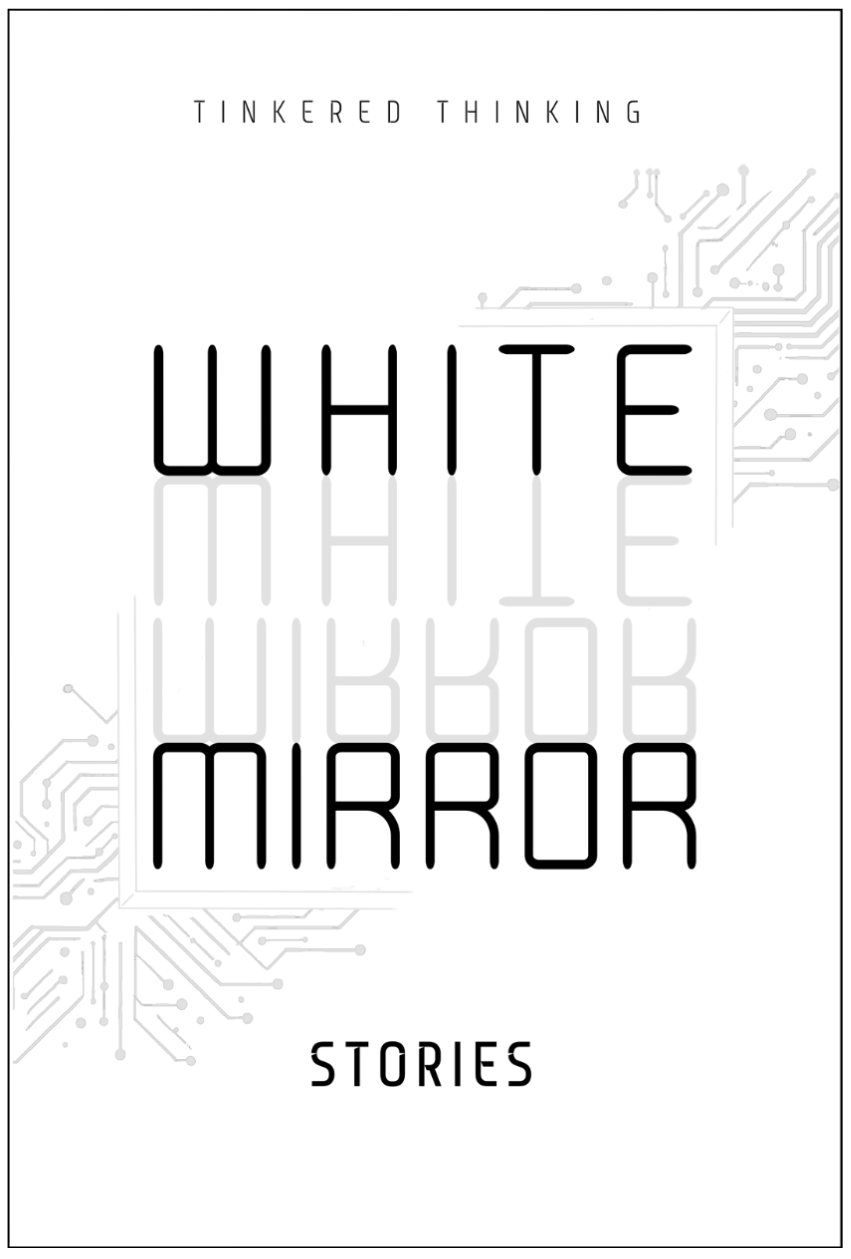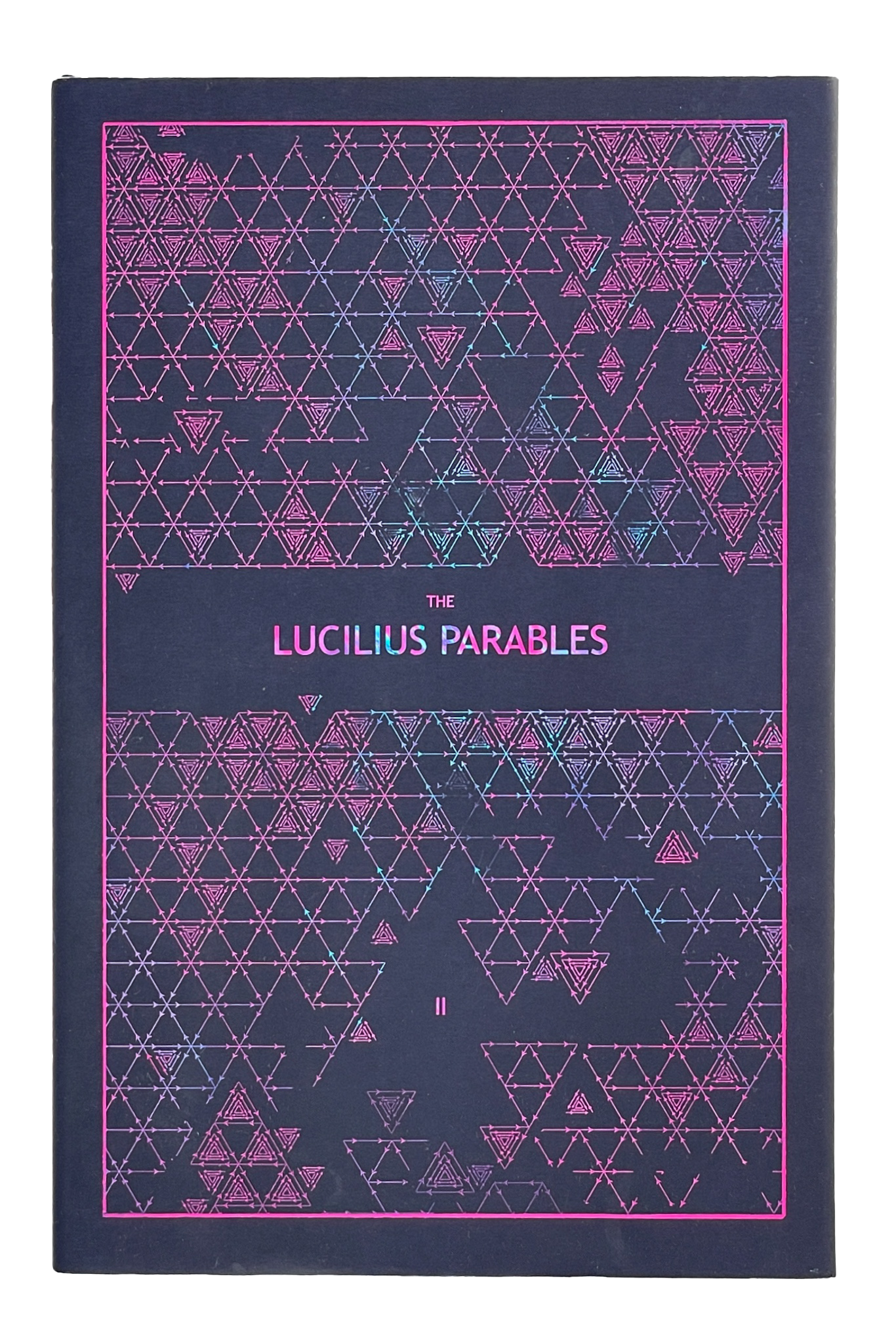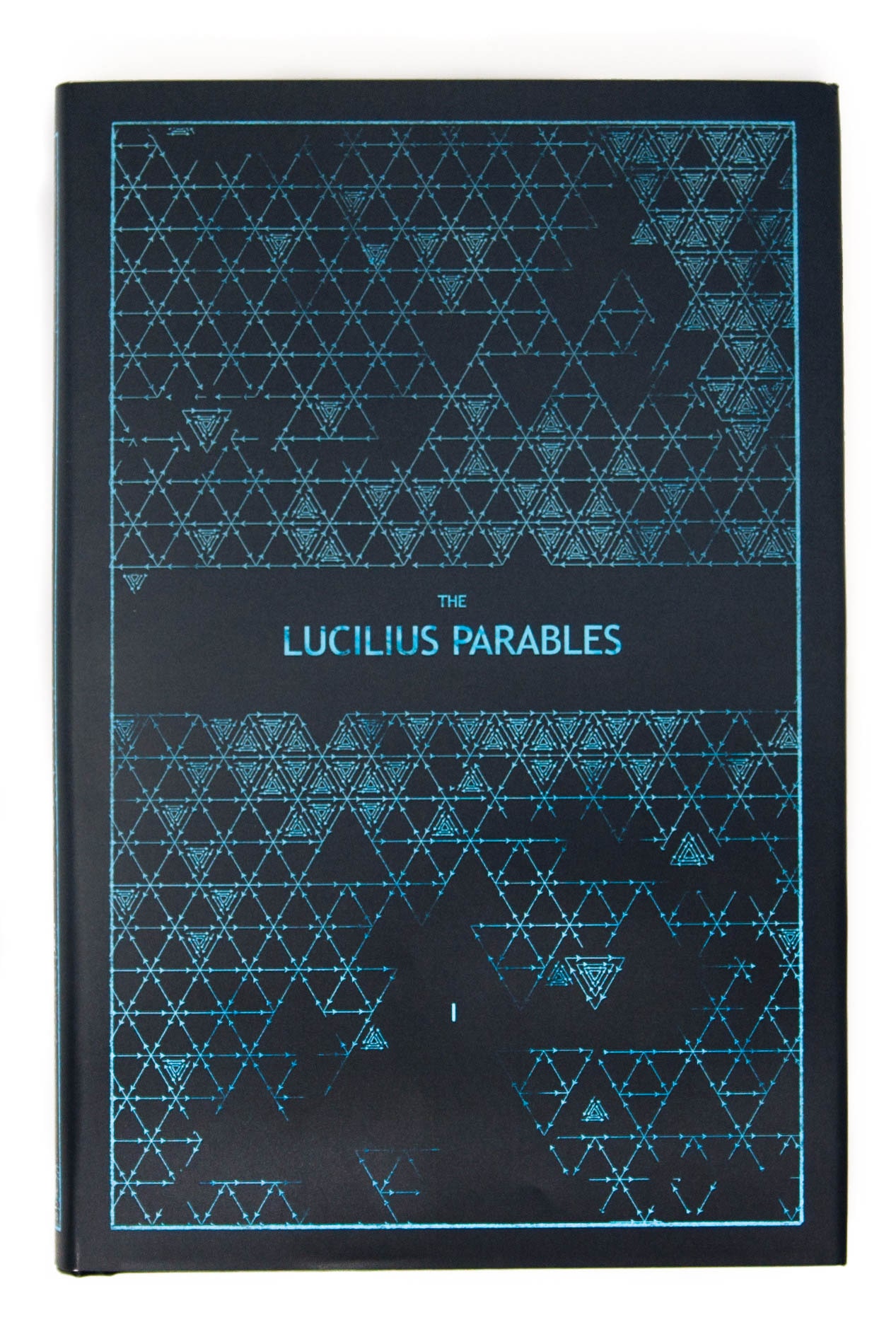Daily, snackable writings to spur changes in thinking.
Building a blueprint for a better brain by tinkering with the code.
subscribe
rss Feeds
SPIN CHESS
A Chess app from Tinkered Thinking featuring a variant of chess that bridges all skill levels!
REPAUSE
A meditation app is forthcoming. Stay Tuned.
PRINT-ON-DEMAND
August 18th, 2020
Tinkered Thinking recently released its first book, The Lucilius Parables, Volume I, which is available for purchase on the Tinkered Thinking Bookstore. This episode seeks to describe the thinking and the process that went into the creation of this book.
The production of this book as a physical object was a very important concern: it was important from the beginning that, if listeners and readers of Tinkered Thinking were going to spend money on a book, it had to be a beautiful book. So how does this go from an idea to a real, physical product?
One could send off the manuscript to publishers. Rejection is likely, and then many decisions about the look, feel and design and editing of the book are probably yanked out of the author’s control. Luckily, times have changed.
The tools available now to authors make the gatekeepers of traditional publishing far less powerful than they once were. As de facto purveyors of ‘good fiction’ the reading public has been at the whim of such opinions, and authors have had to bend their writing, whether consciously or unconsciously to the confines of these opinions. After all, what is more iconic for the aspiring writer than rejection by an editor who holds all the power?
Interestingly, it appears these gatekeeping positions arose due to technological circumstances. The nature of printing, particularly as books became mass-produced commodities squeezed the decision about ‘what to print’ into a centralizing function. Because mass-production requires a fairly large up front cost in order to make long term gains, this structure quite naturally silos writers from large exposure, unless of course their content fits through the filter of a publishing house and it’s myriad editorial opinions, fuelled and protected by their financial ability to actually print books at scale. This is, quite frankly, a bit ridiculous if you think about it. How is it that one editor’s opinion can predict the commercial voraciousness of a reading public? Do we not have a bunch of lovely examples showcasing just how off such editorial opinions can be? Can anyone recall how many publishers passed on J.K. Rowling’s work before she finally got a book printed?
It’s fascinating to reflect on the ramifications of these technological constraints around printing. For example: why is it that the average adult doesn’t write more? (emails, memos and corporate bullshit most certainly do not count, let’s be real). And yet most adults in the modern western world have been crammed through an education system that continually tries to extract some writing from these people. How is it that so few people adopt a serious writing habit after so much training?
Could it be that the training is influenced by a trickle down of authority from the same gatekeepers for the printing world, including of course newspapers, academia and all other print media? This is perhaps a stretch, but it’s curious to wonder what would have to change about writing education in order for more people to continue writing throughout life. Would it perhaps require less focus on the opinion of readers, aka. Editors and graders, and more focus on the potential benefits accrued by the writing mind freed from such external opinions?
Montaigne invented the Essay, and the word merely means try. To write an essay is to simply try and do something. Is it not counter-productive to proactively apply an opinionated rubric to such an attempt? Do we limit our ability to find new structures by doing so?
The questions of this tangent about gatekeepers is not intended nor explored as an affront to editors, publishing houses and English teachers. It’s merely to explore questions that have not been asked and to proffer a possible reason why the art and utility of writing is so constipated: technological and economic constraints regarding printing at scale have burdened just a few people with the task of assessing writing worth reading, when really, the entire reading public would do a far wider, faster and efficient job with the task.
The deeper purpose of these questions is that they can now be answered. The advent of print-on-demand books removes the traditional gatekeeper and links the writer directly with the reading public. While traditional publishing houses might raise their noses at such developments for allowing less-than-superior content to pollute the reader’s sphere, such individuals are analyzing the situation from the wrong angle. With a direct line between creator and consumer, the chance for product-market fit raises to an unfathomable level because the feedback loop for improvement is finally closed. Editors and publishing houses represented a blockage in this loop that has been justified by the false supremacy of someone’s ‘better’ opinion. The unfortunate reality is that an editor is just one reader. Writing no longer needs to pass through that single gate anymore.
Print-on-demand also has some other benefits. The start up cost to experiment is practically nill compared to a first run of a mass-produced book. This, again raises the chances for product-market fit as more writers can toss content out into the reader sphere to see if there is an audience for it.
This process of print-on-demand also wastes far less material than a book that is mass produced and never sells. It’s a somewhat pathetic cultural image for someone to have a closet filled with several thousand copies of their book which, never sold. Print-on-demand changes this drastically. Writers can now create experiments with content for possible audiences with very little up-front cost and minimal waste if the experiment is a dud.
The one notable downside to print-on-demand is that each individual book is quite pricey. This is the case with any new technology, especially disruption technologies. The first cell phones were suitcase-sized monstrosities that barely worked and were so expensive only the Gordon Gecko’s of the world could have them. Now everyone has a super phone that is lightyears beyond those suitcase bricks. This is the probable future of print-on-demand. As the technology scales, the individual print-cost of each book will most likely go down. There is huge incentive to do this from every angle of the situation. Competing print-on-demand services want to offer the better product at the lowest cost to potential authors, and authors, believe it or not, would actually like to make money. With so much of the control placed in the hands of the author, and the sizeable potential upside paired with practically no downside, the traditional publishing route doesn’t even look worth the bother anymore.
This nascent technology does place quite a bit of control in the hands of the author, and for some it may be too much. The first Volume of Lucilius Parables released a couple days ago required a few months of iteration, ordering a copy, waiting, seeing the result, making a change and then repeating the process. Each print-on-demand company has their own structure for getting words and design into the form of a book, and to be frank, there is an enormous amount of room for improvement here.
The first service used to print this book was a company called Blub which delivered a very underwhelming product. There were other options, like Ingram Spark, and then there was Lulu. As fate would have it, half way through this project Lulu deployed a massive upgrade to their website and suddenly carried a much larger selection of sizes and formats. The Lucilius Parables was pulled from Blurb and completely reformatted for one of the options carried by Lulu. And to get into the nitty gritty of just how different such print-on-demand platforms are, Blurb had a fantastic software called Bookwright which made book design quite smooth and relatively quick. Lulu on the other hand requires very specific PDF files that are then mapped on to the book. This requires another design program, like Adobe’s InDesign. While Bookwright with Blurb was free, the design tools required to make excellent looking PDFs for Lulu can be pricey. On top of this is an issue of translation. There was an infuriating discrepancy between the alignment of graphics in the PDF for the cover and what actually turned up in the mail. It required a painfully frustrating and somewhat expensive trial-and-error process of ordering book after book until it was clear exactly what the translation discrepancy was, which was then accounted for with a slight redesign. So while Blurb had the better formatting software, the product they deliver is entirely unimpressive, meanwhile, Lulu produces an absolutely stunning physical product, but formatting the files for the book perfectly is tedious to a degree that really does challenge the spirit. This being said, Lulu is clearly hustling to improve their platform and they’ve specifically mentioned a rollout that would solve the discrepancy that caused so much headache with the design of The Lucilius Parables.
Further, Lulu has their own bookstore, and then they also offer a decent API which can be integrated into an online store and this is exactly how The Tinkered Thinking Bookstore works. Another catch, however, is that if an author desires global distribution, meaning the book can show up in Amazon or a large physical book chain can order it, then prices go up by quite a bit, which either cuts profits drastically or makes the book rather expensive. Naturally, this is something Lulu has done quite deliberately in order to make money. Most authors who self-publish probably imagine their book in Amazon. Setting up an online store, like Shopify, or doing something completely from scratch like The Tinkered Thinking Bookstore requires an entirely different world of considerations. Luckily for Tinkered Thinking, the specific combination of a custom built online store threads the economic needle to price the book somewhat reasonably.
Such print-on-demand services also take care of all the shipping, which is factored into the price of the book when purchased. For the Tinkered Thinking Bookstore, this is another aspect of the Lulu API, which fetches the different shipping levels and costs based on shipping address. While this adds a few more bucks that seem invisible on a store like Amazon, it removes a galaxy of headache from the process for an author.
This combination of tools has enabled the entire process of ordering, printing and delivering a copy of The Lucilius Parables to be 100% automatic. Granted, it required an enormous amount of work to create The Tinkered Thinking Bookstore, which will be thoroughly covered in the next episode, but now that all is set in place, the only effort I personally have to make at this point is looking at my phone when the Tinkered Thinking Bookstore texts me the order details of a purchase someone has just made, everything else, is now completely automated.
-compressed.jpg)





